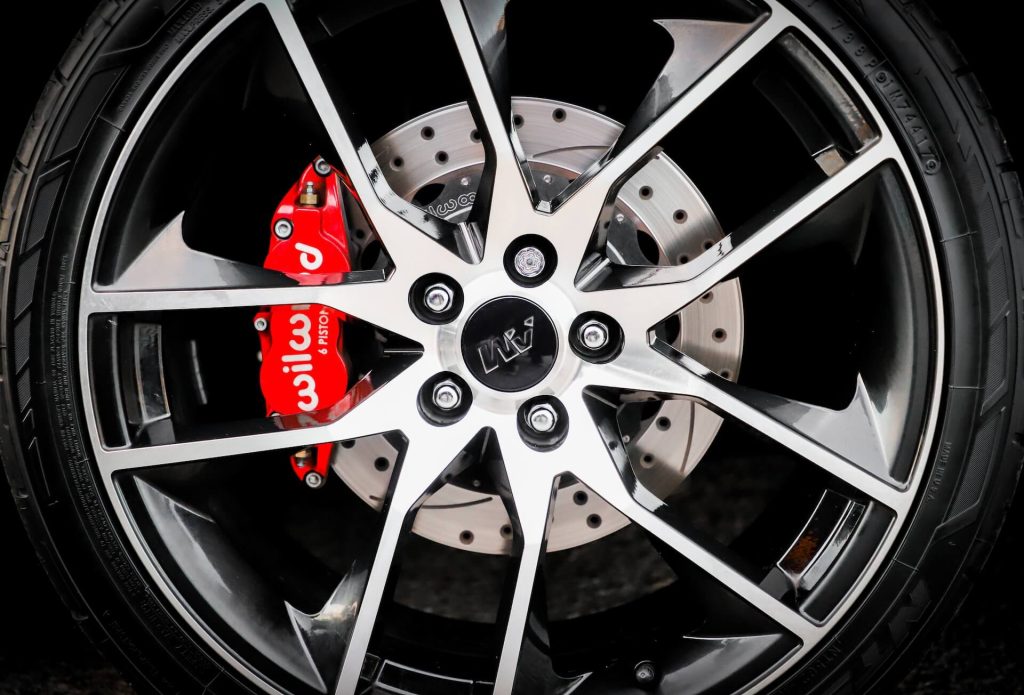Last Updated on June 8, 2023 by Mark S. Taylor
When it comes to the safety and performance of your vehicle, every component plays a crucial role. One such component that often goes unnoticed but is of utmost importance is the lug nuts. Lug nuts are responsible for securely attaching your wheels to the vehicle’s hub, ensuring a tight fit and preventing any mishaps on the road. In this step-by-step guide, we will walk you through the process of installing lug nuts correctly, ensuring your wheels stay firmly in place. So, let’s dive in and learn how to install lug nuts like a pro!

Contents
Why are Lug Nuts Important?
Lug nuts may seem like a small component, but they play a vital role in ensuring your wheels are securely attached to your vehicle. These nuts are responsible for holding the wheels in place while you drive, ensuring they don’t come loose or fall off. Without properly installed and tightened lug nuts, your wheels could potentially detach from your vehicle, leading to a dangerous situation on the road. Therefore, it is crucial to understand the correct way to install lug nuts to ensure your safety and the safety of others on the road.
Tools Required for Installing Lug Nuts
Before diving into the installation process, it is essential to gather the necessary tools and materials. Here’s a list of items you’ll need:
- Lug wrench or a torque wrench
- Jack
- Jack stands
- Wheel chocks
- Gloves
- Wheel cleaner or mild soap
- Brush or cloth for cleaning
- Lubricant or anti-seize compound
Now that we have all the required tools, let’s move on to the step-by-step process of installing lug nuts.
Step 1: Gather the Necessary Tools and Materials
Before starting the installation process, ensure you have all the tools and materials mentioned in the previous section. Having everything prepared beforehand will make the process smoother and more efficient.
Step 2: Position Your Vehicle Safely
Safety should always be your top priority when working on your vehicle. Begin by parking your vehicle on a flat and stable surface. Engage the parking brake to prevent any accidental movement. Place wheel chocks behind the wheels that will remain on the ground to further secure the vehicle.
Step 3: Loosen the Existing Lug Nuts
Using the lug wrench or torque wrench, slightly loosen the lug nuts on the wheel you plan to remove. It is essential to do this before lifting the vehicle off the ground, as the resistance from the tire’s weight will help prevent the wheel from spinning while loosening the nuts.
Step 4: Remove the Wheel
With the lug nuts loosened, position the jack under the vehicle’s designated jacking point. Consult your vehicle’s manual to locate the proper jacking points. Once in position, pump the jack to lift the vehicle until the wheel you’re working on is off the ground. Place the jack stands securely under the vehicle to provide additional support.
Now, remove the lug nuts completely and carefully slide the wheel off the hub, setting it aside.
Step 5: Inspect the Wheel Studs and Hub
With the wheel removed, take a moment to inspect the wheel studs and the hub. Look for any signs of damage, such as stripped threads or corrosion. It is crucial to address any issues before proceeding with the installation of the new lug nuts.
Step 6: Clean the Wheel Studs and Hub
Before installing the new lug nuts, it is essential to clean the wheel studs and hub. Use a wheel cleaner or mild soap and water solution to remove any dirt, grime, or rust from the surfaces. For stubborn debris, use a brush or cloth to scrub gently. Once clean, dry the area thoroughly.
Step 7: Place the Wheel on the Hub
Carefully position the wheel onto the hub, aligning the wheel studs with the corresponding holes. Ensure the wheel is sitting flush against the hub to guarantee a proper fit.
Step 8: Hand-Tighten the Lug Nuts
To start securing the wheel, hand-tighten the lug nuts as much as possible. This will help prevent the wheel from wobbling or shifting while you tighten the lug nuts further.
Step 9: Lower the Vehicle
Using the jack, lower the vehicle until the wheel touches the ground. This will provide a slight amount of pressure on the wheel, aiding in the proper seating of the wheel onto the hub.
Step 10: Tighten the Lug Nuts in a Star Pattern
With the vehicle on the ground, use the lug wrench or torque wrench to tighten the lug nuts. It is crucial to follow a star or cross pattern to ensure even tightening. Start by tightening one lug nut, then move to the opposite lug nut (180 degrees apart). Continue this pattern until all lug nuts are tightened.
Step 11: Double Check the Lug Nut Tightness
Once you’ve tightened all the lug nuts, double-check their tightness to ensure they are properly secured. Use a torque wrench to verify that each lug nut is tightened to the manufacturer’s recommended torque specification. This will help prevent over-tightening or under-tightening, ensuring the lug nuts are appropriately fastened.
Step 12: Repeat the Process for the Remaining Wheels
If you’re installing lug nuts on multiple wheels, repeat the entire process for each wheel. Remember to follow the same steps and maintain a systematic approach to ensure consistency and proper installation.
Read More: A Step-by-Step Guide on How to Change Drum Brakes to Disc Brakes

FAQ
Q: Can I install lug nuts with my bare hands?
A: While it may be possible to install lug nuts by hand, it is not recommended. Using a lug wrench or torque wrench provides the necessary leverage to tighten the lug nuts properly. Hand-tightening may result in uneven torque, leading to wheel imbalance and potential safety hazards.
Q: Should I lubricate the wheel studs before installing lug nuts?
A: It is generally not necessary to lubricate the wheel studs before installing lug nuts. However, using a small amount of lubricant or anti-seize compound on the threads can help prevent rust and corrosion, making future removal easier.
Q: How often should I check the tightness of lug nuts?
A: It is advisable to check the tightness of lug nuts periodically, especially after installing new wheels or tires. Additionally, inspect the lug nuts whenever you notice a vibration or abnormal noises while driving.
Q: Can I reuse old lug nuts?
A: It is generally recommended to replace old lug nuts when installing new wheels or tires. Over time, lug nuts may wear down or become damaged, compromising their effectiveness in securely holding the wheels. Using new lug nuts ensures proper fitment and reduces the risk of wheel detachment.
Q: What if I don’t have a torque wrench?
A: While a torque wrench is the most accurate tool for tightening lug nuts, you can still use a lug wrench. Ensure you tighten the lug nuts as much as possible using the lug wrench, following the star pattern. However, it is highly recommended to invest in a torque wrench for precise torque specifications.
Q: Can I drive immediately after installing lug nuts?
A: After installing lug nuts, it is advisable to test-drive your vehicle for a short distance to ensure everything feels secure. Pay attention to any unusual vibrations or noises. If everything seems normal, you can resume your regular driving routine.
Conclusion: Installing lug nuts correctly is crucial for the safety and performance of your vehicle. By following the step-by-step guide outlined in this article, you can ensure that your wheels are securely fastened, minimizing the risk of accidents caused by loose wheels. Remember to gather the necessary tools, position your vehicle safely, and tighten the lug nuts in a star pattern. By taking these precautions and following the recommended torque specifications, you can confidently install lug nuts and enjoy a smooth and secure driving experience.
